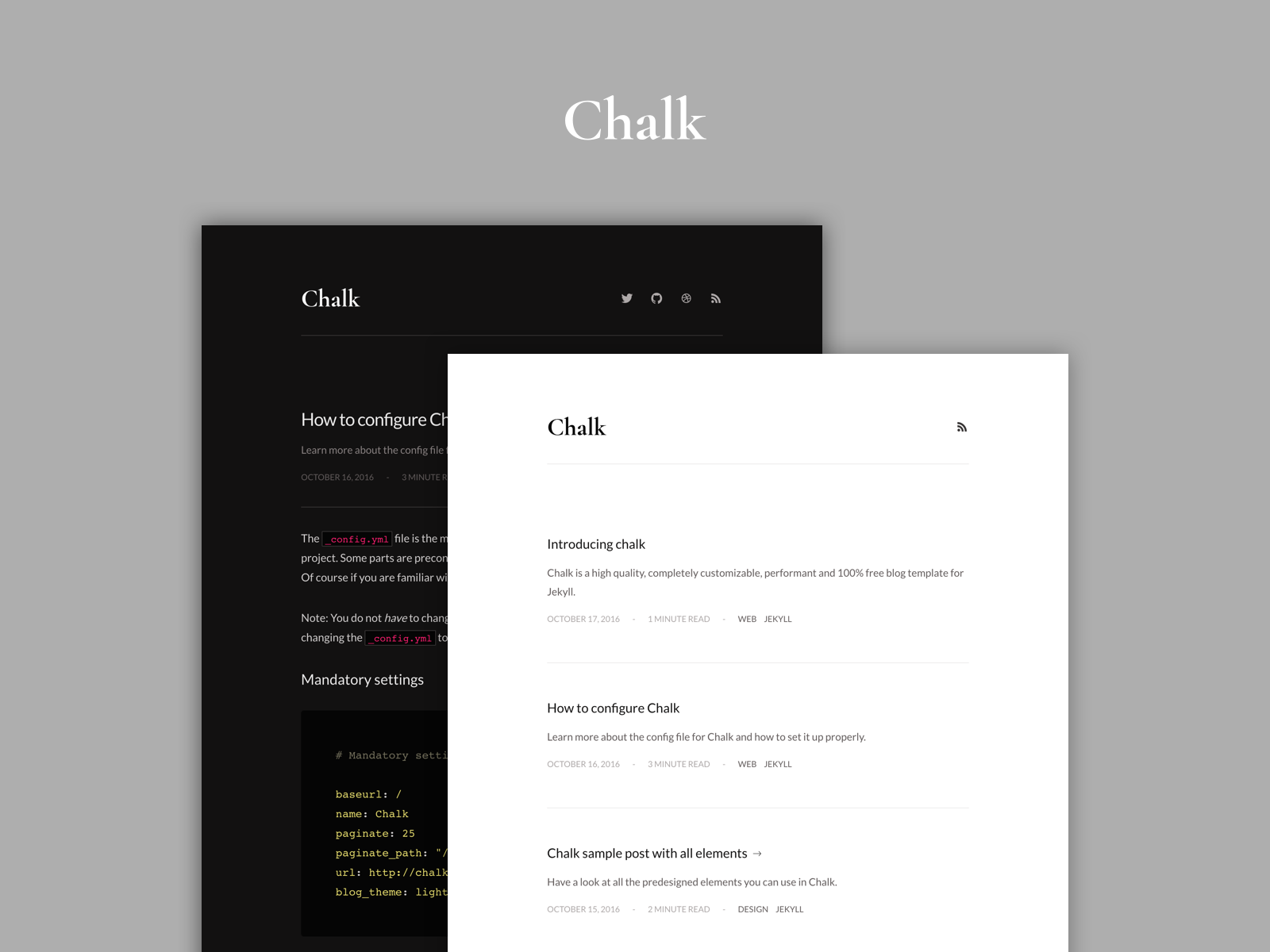Chalk is a high quality, completely customizable, performant and 100% free blog template for Jekyll.
Overview
Features:
- About page.
- Automatic RSS feed.
- Automatic sitemap.
- Automatic time to read post indicator.
- Cross browser support (supports all modern browsers).
- Custom 404 page.
- Custom code highlighting.
- Customizable pagination.
- Dark and Light theme.
- Easy setup and deploying.
- Enlarge images on click.
- Filter on tags.
- Optional tag navigation.
- Frequently updated with new versions.
- Many social media links supported.
- Media embed for videos.
- PageSpeed optimized.
- Proper sharing links for posts on Facebook, Twitter and Google Plus.
- SEO optimized.
- Support for local fonts.
- Support for emoji's.
Integrations
Used tools
- Autoprefixer
- Circle CI
- Html-proofer
- Jekyll
- Jekyll Assets
- Jekyll Sitemap
- HTML5 Boilerplate (Influenced by)
- Kickster
- Retina.js
- STACSS
- Travis
- Yarn
- Zooming
Usage
Installation
If you haven't installed the following tools then go ahead and do so (make sure you have Homebrew installed):
brew install ruby
brew install npm
On windows, install Ruby and Node with the installers found here:
Next setup your environment:
npm run setup
Development
Run Jekyll:
npm run local
Deploy to GitHub Pages
Before you deploy, commit your changes to any working branch except the gh-pages one and run the following command:
npm run publish
Important note: Chalk does not support the standard way of Jekyll hosting on GitHub Pages. You need to deploy your working branch (can be any branch, for xxx.github.io users: use another branch than master) with the npm run publish command. Reason for this is because Chalk uses Jekyll plugins that aren't supported by GitHub pages. The npm run publish command will automatically build the entire project, then push it to the gh-pages branch of your repo. The script creates that branch for you so no need to create it yourself. Also, if you are developing a project site, you must set the baseurl in _config.yml to the name of your repository.
You can find more info on how to use the gh-pages branch and a custom domain here.
View this for more info about automated deployment with Circle CI.
License
MIT License
Contributing
- Fork it (https://github.com/[my-github-username]/chalk/fork)
- Create your feature branch (
git checkout -b my-new-feature) - Commit your changes (
git commit -am 'Add some feature') - Push to the branch (
git push origin my-new-feature) - Create a new Pull Request
